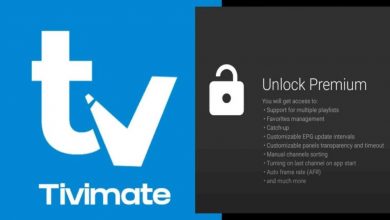How to Create Pay Stubs That Meet IRS and State Compliance Requirements

Pay stubs are more than just a record of wages; they serve as an essential financial document for employees and a compliance requirement for employers. A well-structured pay stub does more than track hours and pay it builds trust, ensures transparency, and helps protect businesses from penalties and disputes. Whether you’re managing payroll for a small startup or overseeing a large workforce, understanding how to create compliant pay stubs is critical to long-term success.
Why Compliance Matters
Compliance with federal and state regulations is not optional. Both the Internal Revenue Service (IRS) and state labor departments have strict payroll reporting standards that businesses must follow. A pay stub that clearly outlines earnings, deductions, and taxes not only keeps employees informed but also protects employers from serious risks.
Non-compliance can lead to:
- Costly fines and penalties: Regulatory agencies impose financial penalties for missing or incorrect information.
- Legal disputes: Employees may challenge wage accuracy if pay stubs are unclear or incomplete.
- Business disruptions: Payroll audits or investigations can drain time, money, and focus away from daily operations.
In short, compliant pay stubs protect both sides of the employment relationship ensuring that employees understand their pay while safeguarding employers against unnecessary risk.
Key Elements Every Pay Stub Must Include
While formatting may vary, certain elements must be present on every pay stub to meet IRS and state requirements. These include:
- Employer and Employee Information
Pay stubs should list the employer’s name, address, and identification details, as well as the employee’s full name, address, and employee ID or Social Security number (masked for security). - Gross Wages
This is the total amount an employee earned before any deductions. It may include hourly wages, salaries, bonuses, overtime, or commissions. - Deductions
These cover mandatory withholdings such as federal income tax, state tax, Social Security, and Medicare. They also include voluntary deductions like health insurance, retirement contributions, or union dues. - Net Pay
Also known as “take-home pay,” this is the amount the employee receives after all deductions have been subtracted from gross wages. - Pay Period and Dates
Employers must clearly indicate the range of dates for which the employee is being paid, along with the actual pay date.
In addition to these core components, some states have additional disclosure requirements. For example, certain states mandate that employers report accrued vacation or sick leave balances, state-specific taxes, or even employer contributions to benefit plans. Because these requirements vary widely, employers must check the regulations in their state before finalizing pay stub formats.
Using Tools to Simplify Pay Stub Creation
Manually creating pay stubs in spreadsheets or word processors can be time-consuming and error-prone. Even small mistakes can lead to compliance issues or frustrated employees. To reduce these risks, many businesses rely on payroll software or online pay stub generators.
- Payroll Software: Comprehensive payroll systems automatically calculate wages, deductions, and taxes, ensuring accuracy and compliance with federal and state rules. These platforms often update tax tables in real time, making them especially useful for staying current.
- Online Pay Stub Generators: For small businesses or contractors, online tools such as real check stubs can quickly produce compliant pay stubs. Many platforms are designed to automatically include required information, reducing the chance of oversight.
- Templates: Some businesses prefer a more hands-on approach, using a free pay stub template Word While convenient, templates must be carefully customized to meet compliance requirements. Not all free versions account for state-specific rules or IRS standards, so employers must verify that all required elements are included.
Best Practices for Compliance
Beyond creating pay stubs, employers should adopt best practices that keep payroll systems compliant and efficient.
- Stay Updated
Payroll laws are not static. The IRS and state labor agencies frequently adjust tax rates, reporting requirements, and employee disclosure rules. Employers should regularly review official updates or work with payroll providers who track changes automatically. - Maintain Records
The IRS requires employers to keep payroll records including pay stubs for at least four years. Some states may require even longer retention periods. Digital copies stored securely are often the easiest way to meet this requirement while reducing paper clutter. - Conduct Payroll Audits
Periodic audits help catch discrepancies early. Reviewing calculations, deductions, and pay stub details ensures employees are paid correctly and all legal requirements are met. - Educate Employees
Employees should be encouraged to review their pay stubs and understand deductions, contributions, and benefits. Providing guidance builds trust and reduces confusion that can lead to disputes. - Prioritize Data Security
Since pay stubs include sensitive employee information, employers must ensure that data is stored and shared securely. Using encrypted payroll systems and limiting access reduces the risk of identity theft or data breaches.
Final Thoughts
Creating compliant pay stubs isn’t just about following the law; it’s about fostering transparency, accountability, and trust in the workplace. Employers who invest in proper payroll systems and processes not only avoid penalties but also strengthen their relationships with employees.
Whether you choose payroll software, online generators, or customizable templates, the priority should always be accuracy and compliance. By including all required information, staying updated on tax laws, and maintaining thorough records, businesses can create pay stubs that stand up to both IRS and state scrutiny.
Ultimately, compliant pay stubs benefit everyone: employees gain confidence in their earnings, and employers gain peace of mind knowing their payroll practices are legally sound and professionally managed.

Source: How to Create Pay Stubs That Meet IRS and State Compliance Requirements


